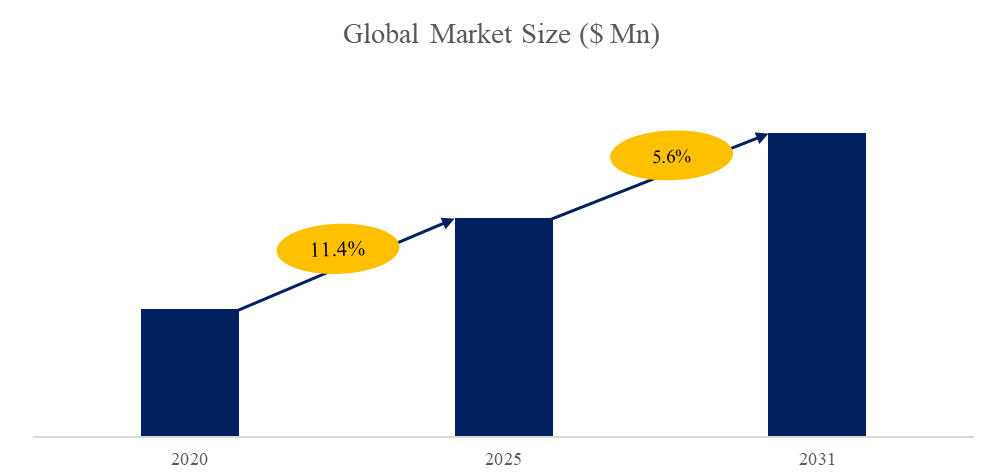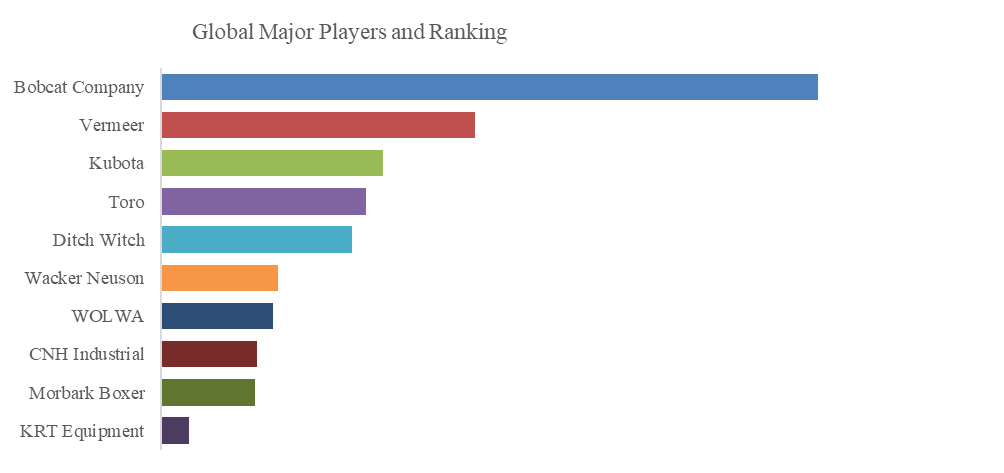Right Now
Stand-on Mini Skid Steer Loader Market Report:the global market for Stand-on Mini Skid Steer Loader was estimated to be worth US$ 1,400.63 million in 2024
A Stand-on Mini Skid Steer Loader is a compact and versatile piece of equipment that combines the features of a mini skid steer with a stand-on operation design. This type of loader is specifically designed for maneuverability and operator comfort, making it a popular choice for a variety of landscaping, construction, and agricultural tasks.
The global market for Stand-on Mini Skid Steer Loader was estimated to be worth US$ 1,400.63 million in 2024. It is forecast to a readjusted size of US$ 2,028.93 million by 2031 with a CAGR of 5.6% during the forecast period 2025-2031.
Figure00001. Global Stand-on Mini Skid Steer Loader Market Size (US$ Million), 2020-2031

Source: QYResearch, "Stand-on Mini Skid Steer Loader - Global Market Share and Ranking, Overall Sales and Demand Forecast 2025-2031”
Figure00002. Global Stand-on Mini Skid Steer Loader Top 10 Players Ranking and Market Share (Ranking is based on the revenue of 2024, continually updated)

Source: QYResearch, "Stand-on Mini Skid Steer Loader - Global Market Share and Ranking, Overall Sales and Demand Forecast 2025-2031”
According to QYResearch Top Players Research Center, the global key manufacturers of Stand-on Mini Skid Steer Loader include Bobcat Company, Vermeer, Kubota, Toro, Ditch Witch, Wacker Neuson, WOLWA, CNH Industrial, Morbark Boxer, KRT Equipment, etc. In 2024, the global top 10 players had a share approximately 74.0% in terms of revenue.
In terms of product type, Track Skid Steer Loader is the largest segment, hold a share of 98% in 2024.
In terms of product application, Construction is the largest application, hold a share of 40.9% in 2024.
Stand-on Mini Skid Steer Loader Industry Trends
1. Electrification Trend: The transition toward electric-powered models is gaining momentum, propelled by environmental regulations and operational efficiency demands. Battery-powered variants are increasingly favored for urban applications and indoor projects where emissions restrictions apply.
2. Rental Market Expansion: Equipment rental models are reshaping industry dynamics, with growing preference for flexible access over ownership. This shift particularly benefits contractors handling short-duration or specialized projects requiring diverse configurations.
3. Attachment Innovation: Manufacturers are rapidly diversifying compatible tooling systems, transforming these compact loaders into multi-functional platforms. Smart attachment technologies are further enhancing precision and application scope across sectors.
4. Geographical Growth: Emerging markets are demonstrating accelerated adoption, driven by infrastructure development and agricultural modernization initiatives. Local production strategies are increasingly complementing traditional export models to serve these expanding regions.
Stand-on Mini Skid Steer Loader Market Drivers & Opportunity
1. Technology Integration Opportunities: The convergence of IoT, AI, and telematics is creating intelligent equipment ecosystems, enabling real-time performance monitoring and predictive maintenance. These digital capabilities are transforming operational efficiency metrics and creating new service-based revenue streams.
2. Emerging Market Potential: Rapid urbanization and infrastructure development across developing economies present untapped growth avenues. Strategic localization of manufacturing and distribution networks will be critical for capturing these geographically dispersed opportunities.
3. Modular Configuration Trend: Growing demand for application-specific solutions is driving innovation in quick-attach systems and customizable hydraulic interfaces. This modularity expands addressable use cases across specialized verticals like utility maintenance and precision agriculture.
Stand-on Mini Skid Steer Loader Market Challenges
1. High Acquisition Costs: Stand-on equipment carries substantially higher upfront costs compared to traditional walk-behind alternatives, creating financial barriers for smaller operators. The significant capital investment required makes purchasing decisions more challenging despite potential long-term benefits. Many contractors find the initial price premium difficult to justify within tight budgets. This cost disparity continues to limit broader market adoption among price-sensitive buyers.
2. Established Equipment Competition: Conventional compact loaders and skid steers maintain strong market dominance through widespread operator familiarity and proven performance. Their entrenched position in construction workflows creates inherent resistance to equipment changes. Dealers and contractors often prefer these known quantities due to their reliability and service network support. This preference for traditional solutions presents a persistent challenge for newer equipment categories seeking market share.
3. Application Limitations: Stand-on models face inherent design constraints that restrict their suitability for certain heavy-duty applications. Their more compact form factor results in reduced lifting capacities and operational reach compared to larger equipment categories. These functional limitations necessitate supplemental machinery for many common construction tasks. Such performance gaps require contractors to maintain mixed fleets, diminishing potential efficiency gains from full equipment transitions.
Stand-on Mini Skid Steer Loader Market Restraints
1. Market Penetration Barriers: High equipment costs and limited financing options hinder adoption, especially among small firms. Though efficient tech offers long-term savings, upfront investment remains prohibitive. Tight credit and economic uncertainty further discourage upgrades. This slows industry-wide modernization and productivity gains.
2. Geopolitical Disruptions: Trade conflicts and tariffs disrupt supply chains, inflating component costs. Export restrictions and reshoring efforts create delays in production and distribution. Manufacturers face higher input costs and logistical headaches. These pressures erode profitability and delay expansion plans.
3. Regulatory Fragmentation: Inconsistent emissions and safety rules across markets complicate standardization. Firms must adapt products regionally, increasing R&D and compliance costs. Approval processes become slower and more complex. This fragmentation stifles innovation and raises barriers to global trade.
About QYResearch
QYResearch founded in California, USA in 2007.It is a leading global market research and consulting company. With over 17 years’ experience and professional research team in various cities over the world QY Research focuses on management consulting, database and seminar services, IPO consulting (data is widely cited in prospectuses, annual reports and presentations), industry chain research and customized research to help our clients in providing non-linear revenue model and make them successful. We are globally recognized for our expansive portfolio of services, good corporate citizenship, and our strong commitment to sustainability. Up to now, we have cooperated with more than 60,000 clients across five continents. Let’s work closely with you and build a bold and better future.
QYResearch is a world-renowned large-scale consulting company. The industry covers various high-tech industry chain market segments, spanning the semiconductor industry chain (semiconductor equipment and parts, semiconductor materials, ICs, Foundry, packaging and testing, discrete devices, sensors, optoelectronic devices), photovoltaic industry chain (equipment, cells, modules, auxiliary material brackets, inverters, power station terminals), new energy automobile industry chain (batteries and materials, auto parts, batteries, motors, electronic control, automotive semiconductors, etc.), communication industry chain (communication system equipment, terminal equipment, electronic components, RF front-end, optical modules, 4G/5G/6G, broadband, IoT, digital economy, AI), advanced materials industry Chain (metal materials, polymer materials, ceramic materials, nano materials, etc.), machinery manufacturing industry chain (CNC machine tools, construction machinery, electrical machinery, 3C automation, industrial robots, lasers, industrial control, drones), food, beverages and pharmaceuticals, medical equipment, agriculture, etc.
Contact Us:
If you have any queries regarding this report or if you would like further information, please contact us:
QY Research Inc.
Add: 17890 Castleton Street Suite 369 City of Industry CA 91748 United States
E-mail: global@qyresearch.com
Tel: 001-626-842-1666(US) 0086-133 1872 9947(CN)
More Posts



















Report This Post
Please complete the following requested information to flag this post and report abuse, or offensive content. Your report will be reviewed within 24 hours. We will take appropriate action as described in Findit terms of use.


